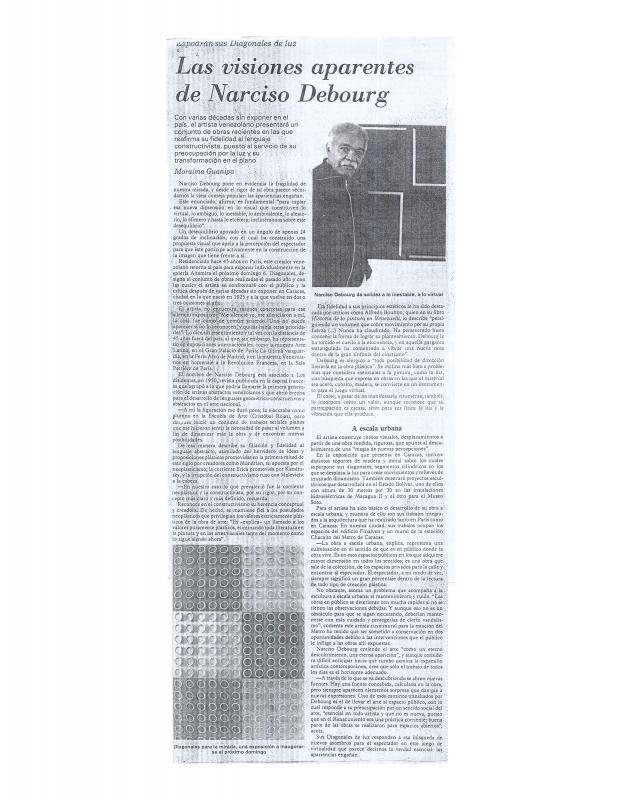In 1969, Venezuelan painter and sculptor Narciso Debourg (b. 1925) returned to Venezuela for an exhibition at the Galería Estudio Actual de Caracas. Living in Paris since 1948, Debourg came back for the exhibition, while making it clear that he wished to maintain his residence in the French capital since it was a meeting point for the European trends and a place where he had undoubtedly developed his own network of artistic contacts. Debourg, who was part of a generation of artists who studied in Paris on a scholarship at the end of the 1940s and beginning of the 1950s, left Venezuela in order to study Constructivism. In 1950, these artists formed Los Disidentes group, and after their return renewed the artistic scene of the country through the introduction of geometric abstraction. However, Debourg did not come back and his later career reveals scarce contact with Venezuela. It existed, but only through sporadic shows, participations in collective exhibitions of national art, as well as his involvement in some public spaces.
Debourg’s stance, as it can be deduced from his statements to French-Venezuelan poet and journalist Miyó Vestrini (1938–91), denotes a certain “purism” with respect to Kinetic art, and the need for biennials and salons to be dedicated to only one art trend. By the same token, as he declares the struggle between figurative and abstract art to be over, Debourg states that the New Figuration movement lacks direction within the art of the time.
The interview outlines for the reader the peculiar profile of an artist who felt tension between the universal and the local—derived from his own path and his own relationship with the media—which placed him in a specific position with respect to the public and his own artistic search.
For another review, one by Moraima Guanipa on the Diagonales exhibition held at the Galería Altamira de Caracas (1994) which includes works by Debourg, see in the ICAA digital archive “Las visiones aparentes de Narciso Debourg” (doc. no. 1157673).

